#if not see French history
Explore tagged Tumblr posts
Text
From a criminal justice standpoint I agree with this. Specific to this case tho I genuinely believe it’s what Luigi wants. The level of planning that went into this leads me to believe the only reason he was found with a crime labs wet dream worth of evidence is he intended to get caught in that McDonald’s. Luigi’s trial will be the most heavily covered trial since OJ. Reading his manifesto and other writings of his found online I believe that he has a message he would like to get out. So don’t start advocating that they turn off the microphone. We all know that he did it. The bullet casings match and his finger prints were found at the scene. Do not discredit the sacrifice this man has made by labeling him a fall guy. We don’t have to pretend he’s innocent. There is still a path to freedom for him. That path is jury nullification. We need 12 people in an act of pure class solidarity to declare with one voice for us all HE HAD IT COMING. If they can abuse the law to kill people for profit we should use jury nullification for justice.
oh so you’re telling me the guy had a 3 page handwritten explanation of his motives and mindset and a gun and silencer that matches the description despite it being a week since the guy was shot? hmmmm interesting
#luigi mangione#brian thompson#he had it coming#jury nullification#don’t do my boy Luigi like that#seriously#if he was a plant he wouldn’t be so hot#uhc ceo#the claims adjuster#united healthcare#if we tell them we will let people get away with killing them maybe the rich will behave#if not see French history#would the bank give me a loan for a guillotine#what would they do if a lot of us all asked for loans to build a guillotine#no really like 3 million people across the country all request loans for. guillotines. in the same day they’d notice#good trouble
47K notes
·
View notes
Text

For the past six years or so, this graph has been making its rounds on social media, always reappearing at conveniently timed moments…
The insinuation is loud and clear: parallels abound between 18th-century France and 21st-century USA. Cue the alarm bells—revolution is imminent! The 10% should panic, and ordinary folk should stock up on non-perishables and, of course, toilet paper, because it wouldn’t be a proper crisis without that particular frenzy. You know the drill.

Well, unfortunately, I have zero interest in commenting on the political implications or the parallels this graph is trying to make with today’s world. I have precisely zero interest in discussing modern-day politics here. And I also have zero interest in addressing the bottom graph.
This is not going to be one of those "the [insert random group of people] à la lanterne” (1) kind of posts. If you’re here for that, I’m afraid you’ll be disappointed.
What I am interested in is something much less click-worthy but far more useful: how historical data gets used and abused and why the illusion of historical parallels can be so seductive—and so misleading. It’s not glamorous, I’ll admit, but digging into this stuff teaches us a lot more than mindless rage.
So, let’s get into it. Step by step, we’ll examine the top graph, unpick its assumptions, and see whether its alarmist undertones hold any historical weight.
Step 1: Actually Look at the Picture and Use Your Brain
When I saw this graph, my first thought was, “That’s odd.” Not because it’s hard to believe the top 10% in 18th-century France controlled 60% of the wealth—that could very well be true. But because, in 15 years of studying the French Revolution, I’ve never encountered reliable data on wealth distribution from that period.
Why? Because to the best of my knowledge, no one was systematically tracking income or wealth across the population in the 18th century. There were no comprehensive records, no centralised statistics, and certainly no detailed breakdowns of who owned what across different classes. Graphs like this imply data, and data means either someone tracked it or someone made assumptions to reconstruct it. That’s not inherently bad, but it did get my spider senses tingling.
Then there’s the timeframe: 1760–1790. Thirty years is a long time— especially when discussing a period that included wars, failed financial policies, growing debt, and shifting social dynamics. Wealth distribution wouldn’t have stayed static during that time. Nobles who were at the top in 1760 could be destitute by 1790, while merchants starting out in 1760 could be climbing into the upper tiers by the end of the period. Economic mobility wasn’t common, but over three decades, it wasn’t unheard of either.
All of this raises questions about how this graph was created. Where’s the data coming from? How was it measured? And can we really trust it to represent such a complex period?
Step 2: Check the Fine Print
Since the graph seemed questionable, the obvious next step was to ask: Where does this thing come from? Luckily, the source is clearly cited at the bottom: “The Income Inequality of France in Historical Perspective” by Christian Morrisson and Wayne Snyder, published in the European Review of Economic History, Vol. 4, No. 1 (2000).

Great! A proper academic source. But, before diving into the article, there’s a crucial detail tucked into the fine print:
“Data for the bottom 40% in France is extrapolated given a single data point.”
What does that mean?
Extrapolation is a statistical method used to estimate unknown values by extending patterns or trends from a small sample of data. In this case, the graph’s creator used one single piece of data—one solitary data point—about the wealth of the bottom 40% of the French population. They then scaled or applied that one value to represent the entire group across the 30-year period (1760–1790).
Put simply, this means someone found one record—maybe a tax ledger, an income statement, or some financial data—pertaining to one specific year, region, or subset of the bottom 40%, and decided it was representative of the entire demographic for three decades.
Let’s be honest: you don’t need a degree in statistics to know that’s problematic. Using a single data point to make sweeping generalisations about a large, diverse population (let alone across an era of wars, famines, and economic shifts) is a massive leap. In fact, it’s about as reliable as guessing how the internet feels about a topic from a single tweet.
This immediately tells me that whatever numbers they claim for the bottom 40% of the population are, at best, speculative. At worst? Utterly meaningless.

It also raises another question: What kind of serious journal would let something like this slide? So, time to pull up the actual article and see what’s going on.
Step 3: Check the Sources
As I mentioned earlier, the source for this graph is conveniently listed at the bottom of the image. Three clicks later, I had downloaded the actual article: “The Income Inequality of France in Historical Perspective” by Morrisson and Snyder.
The first thing I noticed while skimming through the article? The graph itself is nowhere to be found in the publication.
This is important. It means the person who created the graph didn’t just lift it straight from the article—they derived it from the data in the publication. Now, that’s not necessarily a problem; secondary analysis of published data is common. But here’s the kicker: there’s no explanation in the screenshot of the graph about which dataset or calculations were used to make it. We’re left to guess.
So, to figure this out, I guess I’ll have to dive into the article itself, trying to identify where they might have pulled the numbers from. Translation: I signed myself up to read 20+ pages of economic history. Thrilling stuff.
But hey, someone has to do it. The things I endure to fight disinformation...
Step 4: Actually Assess the Sources Critically
It doesn’t take long, once you start reading the article, to realise that regardless of what the graph is based on, it’s bound to be somewhat unreliable. Right from the first paragraph, the authors of the paper point out the core issue with calculating income for 18th-century French households: THERE IS NO DATA.
The article is refreshingly honest about this. It states multiple times that there were no reliable income distribution estimates in France before World War II. To fill this gap, Morrisson and Snyder used a variety of proxy sources like the Capitation Tax Records (2), historical socio-professional tables, and Isnard’s income distribution estimates (3).
After reading the whole paper, I can say their methodology is intriguing and very reasonable. They’ve pieced together what they could by using available evidence, and their process is quite well thought-out. I won’t rehash their entire argument here, but if you’re curious, I’d genuinely recommend giving it a read.
Most importantly, the authors are painfully aware of the limitations of their approach. They make it very clear that their estimates are a form of educated guesswork—evidence-based, yes, but still guesswork. At no point do they overstate their findings or present their conclusions as definitive
As such, instead of concluding with a single, definitive version of the income distribution, they offer multiple possible scenarios.
It’s not as flashy as a bold, tidy graph, is it? But it’s far more honest—and far more reflective of the complexities involved in reconstructing historical economic data.
Step 5: Run the numbers
Now that we’ve established the authors of the paper don’t actually propose a definitive income distribution, the question remains: where did the creators of the graph get their data? More specifically, which of the proposed distributions did they use?
Unfortunately, I haven’t been able to locate the original article or post containing the graph. Admittedly, I haven’t tried very hard, but the first few pages of Google results just link back to Twitter, Reddit, Facebook, and Tumblr posts. In short, all I have to go on is this screenshot.
I’ll give the graph creators the benefit of the doubt and assume that, in the full article, they explain where they sourced their data. I really hope they do—because they absolutely should.
That being said, based on the information in Morrisson and Snyder’s paper, I’d make an educated guess that the data came from Table 6 or Table 10, as these are the sections where the authors attempt to provide income distribution estimates.

Now, which dataset does the graph use? Spoiler: None of them.
How can we tell? Since I don’t have access to the raw data or the article where this graph might have been originally posted, I resorted to a rather unscientific method: I used a graphical design program to divide each bar of the chart into 2.5% increments and measure the approximate percentage for each income group.
Here’s what I found:

Now, take a moment to spot the issue. Do you see it?
The problem is glaring: NONE of the datasets from the paper fit the graph. Granted, my measurements are just estimates, so there might be some rounding errors. But the discrepancies are impossible to ignore, particularly for the bottom 40% and the top 10%.
In Morrisson and Snyder’s paper, the lowest estimate for the bottom 40% (1st and 2nd quintiles) is 10%. Even if we use the most conservative proxy, the Capitation Tax estimate, it’s 9%. But the graph claims the bottom 40% held only 6%.
For the top 10% (10th decile), the highest estimate in the paper is 53%. Yet the graph inflates this to 60%.
Step 6: For fun, I made my own bar charts
Because I enjoy this sort of thing (yes, this is what I consider fun—I’m a very fun person), I decided to use the data from the paper to create my own bar charts. Here’s what came out:

What do you notice?
While the results don’t exactly scream “healthy economy,” they look much less dramatic than the graph we started with. The creators of the graph have clearly exaggerated the disparities, making inequality seem worse.
Step 7: Understand the context before drawing conclusions
Numbers, by themselves, mean nothing. Absolutely nothing.
I could tell you right now that 47% of people admit to arguing with inanimate objects when they don’t work, with printers being the most common offender, and you’d probably believe it. Why? Because it sounds plausible—printers are frustrating, I’ve used a percentage, and I’ve phrased it in a way that sounds “academic.”
You likely wouldn’t even pause to consider that I’m claiming 3.8 billion people argue with inanimate objects. And let’s be real: 3.8 billion is such an incomprehensibly large number that our brains tend to gloss over it.
If, instead, I said, “Half of your friends probably argue with their printers,” you might stop and think, “Wait, that seems a bit unlikely.” (For the record, I completely made that up—I have no clue how many people yell at their stoves or complain to their toasters.)
The point? Numbers mean nothing unless we put them into context.
The original paper does this well by contextualising its estimates, primarily through the calculation of the Gini coefficient (4).
The authors estimate France’s Gini coefficient in the late 18th century to be 0.59, indicating significant income inequality. However, they compare this figure to other regions and periods to provide a clearer picture:
Amsterdam (1742): Much higher inequality, with a Gini of 0.69.
Britain (1759): Lower inequality, with a Gini of 0.52, which rose to 0.59 by 1801.
Prussia (mid-19th century): Far less inequality, with a Gini of 0.34–0.36.
This comparison shows that income inequality wasn’t unique to France. Other regions experienced similar or even higher levels of inequality without spontaneously erupting into revolution.
Accounting for Variations
The authors also recalculated the Gini coefficient to account for potential variations. They assumed that the income of the top quintile (the wealthiest 20%) could vary by ±10%. Here’s what they found:
If the top quintile earned 10% more, the Gini coefficient rose to 0.66, placing France significantly above other European countries of the time.
If the top quintile earned 10% less, the Gini dropped to 0.55, bringing France closer to Britain’s level.
Ultimately, the authors admit there’s uncertainty about the exact level of inequality in France. Their best guess is that it was comparable to other countries or somewhat worse.
Step 8: Drawing Some Conclusions
Saying that most people in the 18th century were poor and miserable—perhaps the French more so than others—isn’t exactly a compelling statement if your goal is to gather clicks or make a dramatic political point.
It’s incredibly tempting to look at the past and find exactly what we want to see in it. History often acts as a mirror, reflecting our own expectations unless we challenge ourselves to think critically. Whether you call it wishful thinking or confirmation bias, it’s easy to project the future onto the past.
Looking at the initial graph, I understand why someone might fall into this trap. Simple, tidy narratives are appealing to everyone. But if you’ve studied history, you’ll know that such narratives are a myth. Human nature may not have changed in thousands of years, but the contexts we inhabit are so vastly different that direct parallels are meaningless.
So, is revolution imminent? Well, that’s up to you—not some random graph on the internet.
Notes
(1) A la lanterne was a revolutionary cry during the French Revolution, symbolising mob justice where individuals were sometimes hanged from lampposts as a form of public execution
(2) The capitation tax was a fixed head tax implemented in France during the Ancien Régime. It was levied on individuals, with the amount owed determined by their social and professional status. Unlike a proportional income tax, it was based on pre-assigned categories rather than actual earnings, meaning nobles, clergy, and commoners paid different rates regardless of their actual wealth or income.
(3) Jean-Baptiste Isnard was an 18th-century economist. These estimates attempted to describe the theoretical distribution of income among different social classes in pre-revolutionary France. Isnard’s work aimed to categorise income across groups like nobles, clergy, and commoners, providing a broad picture of economic disparity during the period.
(4) The Gini coefficient (or Gini index) is a widely used statistical measure of inequality within a population, specifically in terms of income or wealth distribution. It ranges from 0 to 1, where 0 indicates perfect equality (everyone has the same income or wealth), and 1 represents maximum inequality (one person or household holds all the wealth).
#frev#french revolution#history#disinformation#income inequality#critical thinking#amateurvoltaire's essay ramblings#don't believe everything you see online#even if you really really want to
243 notes
·
View notes
Text
Incorruptible chap 3 pt 10
I took the 'arrows of hercules' thing from a letter Camille wrote to his Dad at some point loool
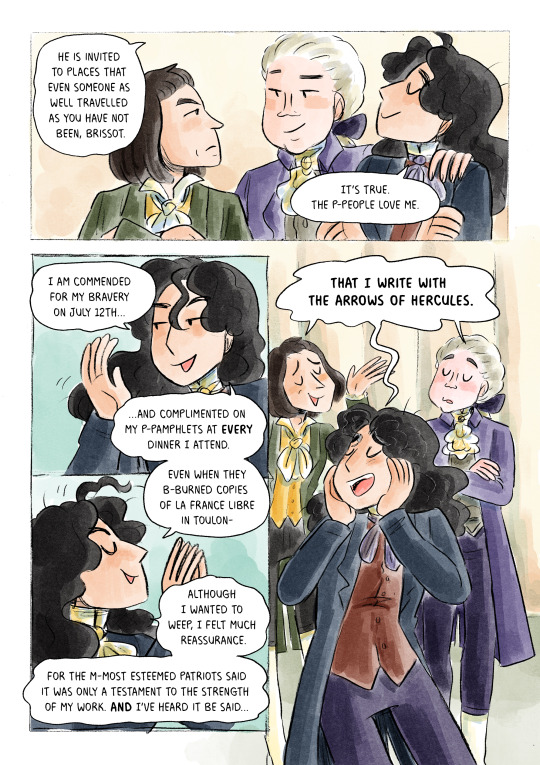
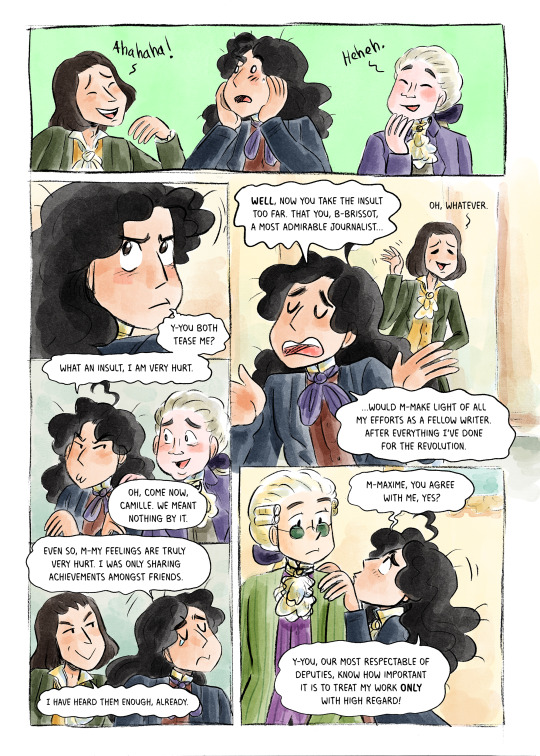
#incorruptiblecomic#pouty camille is so fun to draw lol#we love and hate to see it#peak brat energy#french revolution#frev#camille desmoulins#robespierre#petion#brissot#webcomic#webtoon#comic#comic update#frev art#history comic#historical fiction#revolution francais#webcomic update
171 notes
·
View notes
Text

Cleopatra
By Gustave Moreau
Watercolor Painting, c. 1887
Private Collection.
I love her nose in this painting. She's everything I want to be. She's also definitely a capricorn 👅
#im back#long time no see#aesthetic#art#artwork#painting#history#19th century#19th century painting#gustave moreau#cleopatra#royalty#ancient#ancient egypt#ancient history#watercolor#watercolor art#art blog#egypt#ptolemaic#macedonian#French#french painting#french art#french artist#victorian#third republic#belle epoque#symbolism#mystical
88 notes
·
View notes
Text
I swear I'm just searching more references for drawing portraits
@miffy-junot may give a better opinion, but if I needed a real life face reference to help me draw Junot even better (paintings don't exactly emote), I would also use Max Verstappen. Maybe I'm crazy but I kinda see some vague similarities. The pouty lips, hooded and expressive eyes, the fair coloring and arched brows mostly.




I also like to find additional references with other historical figures, Napoleon for example is my favourite. Like I also look at Tom Hiddleston or - lol - Damiano David and James O' Barr's Erik Draven, maybe also for the vibe I want to channel into my portraits. You may already know how I draw him.




#i'm crazy#but also I'm just picking references for drawings no more#fandom crossover#jean andoche junot#andoche junot#i won't tag max because i don't think fans want to see max verstappen compared to an ancient french general lol#tu tu tu tu#not a fancast#drawing#my art#drawing references#portraits#napoleonic era#napoleon#napoleon bonaparte#napoleonic#history#french revolution#first french empire#art
36 notes
·
View notes
Text
I think one of the things I appreciated the most about Nocturne was the protagonism on the Haitian Revolution.
This was a revolution that didn't just change Haiti, it changed the world. This was the revolution that would make the first black state. The first slaveless state. That would make every slave nation tremble with fear, from Europe To America to Asia to Oceania to Africa. It was what was never meant to happen, but did.
It's the nation that would defeat Napoleon and the British marine. Nobody could take down Haiti. You know why Napoleon went to colonize Europe? Haiti. That's why. He couldn't take down Haiti. Couldn't make it french territory again. So, he turned towards Europe.
We are talking about an undefeated nation.
AND! AND! A largely Vodu nation!
I was SO happy to see Vodu be portrayed as the wonderful religion it is, sacred and divinely intertwined with the Haitian revolution. The revolution was noted to start with Vodu chants and ritual.
White people refused to understand the link between the two worlds that could bring ancestors to meet their descendants. They created zombies as a horror trope. They made vodu dolls as a horror gimmick. They took a sacred religion and reduced it and vilanized it.
And I'm so happy to see it being positively portrayed in such a famous media. Vodu practicioners have already made media of the like. But I was positively surprised with what Nocturne had to present to us.
Of course, the knowledge that the french revolution was incomplete, that it was NOT FOR EVERYONE, is then again, something I really appreciate as a history student and a person. The french revolution killed mostly peasent and established the bourgeoisie, but did it end the Noir Code? No. Did it establish women's and black people's suffrage? No. Did it make a agrarian reform? No. Was it for the people? It had it's importance. But it was, at the very least, not for all the people.
And let's not forget that the french revolution's main intellectual current would birth biological racism, an unscientific current that claimed evidence of "different sized skulls" for example to prove humans possessed different races based on phenotypes.
Last, but certainly not least: it is absurd to see people claim that "all indigenous people have been killed". Acknowledging multi-ethnic indigenous genocide HAS to go along with the respect that there STILL are indigenous people and they continue their fight for their lives and land.
You know who the show demonstrates as such? Olrox.
While I don't appreciate the show claiming "all of his people were slaughtered" as that is historically inaccurate, I was most happy to see an Aztec vampire present and very alive, connected to his culture, protagonizing the show. The Nahua are still very much alive and kicking and I appreciated that the show took that into account.
And Annette! Sweet Annette being one of the leads makes me most joyful. I can't stand idiots that claim her presence.on France was """historically innacurate""", check again, dumbasses, free black people were all over France (especially the children of black Caribbean elites, for example, from Haiti back then known as Saint-Domingue, which did not possess universities and would sent their children to study in Europe.)
Anyway. To see her star as one of the leads made me so incredibly happy. She's a wonderful character and I appreciate how they let Annette be unapologetic and direct, especially during a moment between revolutions were she was very aware the french revolution didn't mean shit to her people.
But she was so lovely and to see her afro-caribean religion present AND source of her power made me emotional more than a few times.
Castlevania Nocturne really did hit this nail on the head.
Anyways. To make sure I give people answers to "but where's the evidence to x thing you said?" Here are my sources:
THYLEFORS, Markel; “Our Government is in Bwa Kayiman:”A Vodou Ceremony in 1791 and its Contemporary Significations, 2009
DUBOIS, Laurent; Avengers of the New World : the story of the Haitian Revolution, 2004
BUCK-MORSS, Susan; Hegel, Haiti and universal history, 2009
#Castlevania nocturne#Haitian revolution#French revolution#castlevania annette#richter belmont#castlevania netflix#maria renard#tera renard#castlevania edouard#olrox#castlevania olrox#castlevania spoilers#I'm just a history student who really likes Haitian history#and who's sick and tired to see people glorify the french revolution#like if you wanted a revolution that was truly liberating and radical and you know REVOLUTIONARY#the Haitian Revolution is RIGHT THERE#like HELLOOOOOO#and i'm so sick of seeing Vodu religion demonized#it's a beautiful religion and it shouldn't matter what you think of it#it deserves to be respected#we all have a responsibility in anti-racism and anti-religious oppression#so work
440 notes
·
View notes
Text
yes when a trans woman laments how patriarchy and fascism eradicated a large portion of her history she is being a "doomer" i'll be sure to not catastrophize about what the past could be in the future
#hold on i can go back to my misandrist arc if trans men keep treating me like this#see it's funny cuz being a doomer about the past is as real as misandry is#if i wasn't posting this at 3 am i could probably start playing transmisogynist bingo#we still don't talk abt how a large number of those examples are recent history and european#i like the additions but my point abt colonialism doesn't change when i learn about a french transfem surprisingly
32 notes
·
View notes
Text
Another set of pictures from Musée Carnavalet! Robespierre, baby-faced Saint-Just & Saint-Just's gun!
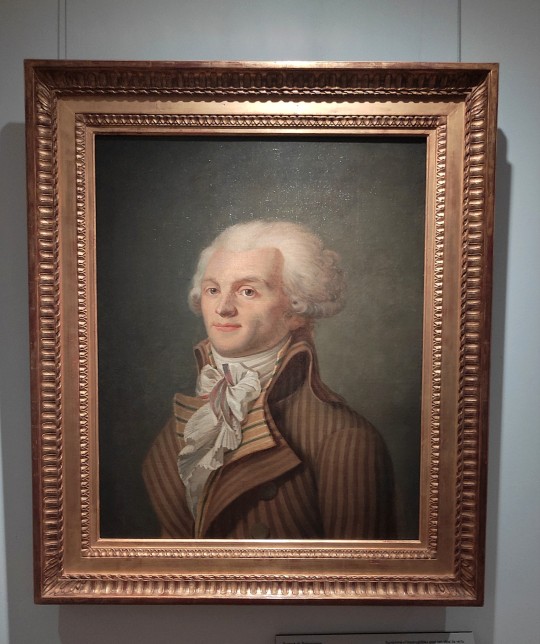
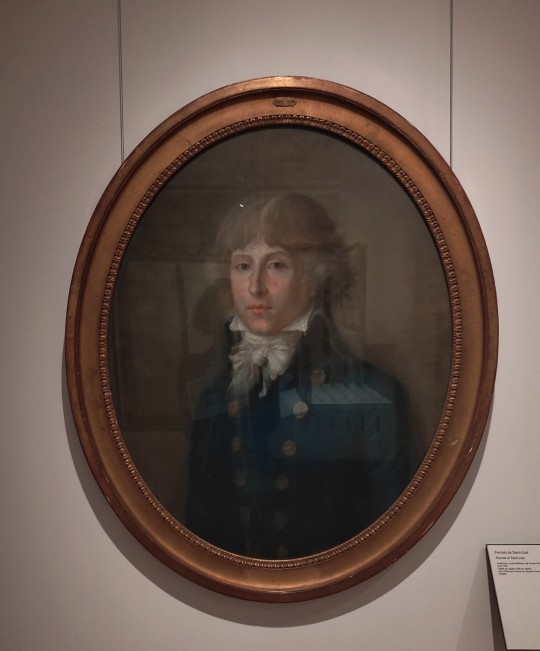

#frev#french revolution#frevblr#maximilien robespierre#louis antoine de saint just#history#historical artifacts#musée Carnavalet#saint just#Robespierre#1700s#18th century#french history#see I have restraint so I won't make any joke about how one shouldn't give guns to children
127 notes
·
View notes
Text
Pics of Marshal Victor that I Found





#js like Brune one I rlly can't see him in any of this but it said to be him so ok I guess 😭#kinda interested in him cus tbh he got a baby face imo#napoleonic era#history#napoleonic wars#french#french history#napoleon’s marshals#marshal victor#claude victor perrin#art print
14 notes
·
View notes
Text

Bitches hate him cause he was right three centuries early (most people have not yet realized this yet), I do not care what he was/did in life (allegedly also I know, I still think murder is worse by several degrees but that is also not the point) this is about his moral philosophy, world view, atheism and hating the French Catholic God despite it in theory enabling him, but mostly his writings enabling Angela Carter doing bi theory before the word bisexual existed and being anti death penalty. If you think sex is worse than guillotining people who you do not like the door is right there please use it you are the problem.
youtube
#meerathehistorian#marquis de sade#angela carter#simone de beauvoir#philosophy#french revolution#anti censorship#anti purity culture#anti death penalty#queer theory#18th century#18th century history#moral relativism#video#bi history#bisexual history#queer history#bisexual#queer#lgbtq+#history#historical references#atheism#for future reference#historiography#queue are more than what people see
13 notes
·
View notes
Text

gearing up for INSUFFERABLE FUCKER SUMMER #INSUFFERABLE #FUCKER #SUMMER
#neigh (blabbers)#famous mgs comic Yellowcake on the same shelf as Artificial Hells: participatory art and the politics of spectatorship;#Mysteries of the Alphabet; Introduction To History Of French Language & Seeing Understanding and Analysing Images YESSIR thats called RANGE
10 notes
·
View notes
Text

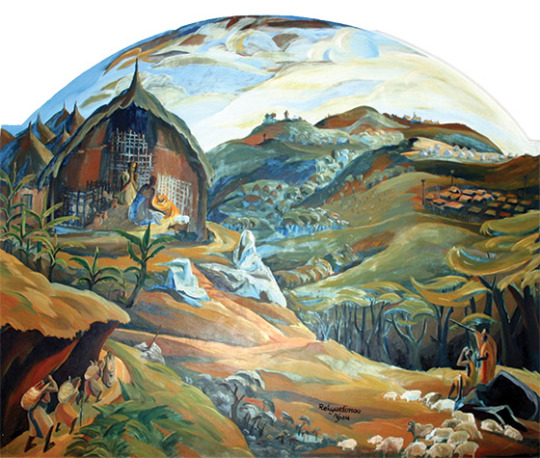





We see him come and know him ours
Russia: "Carol of the Russian Children," traditional // Kenya: The Nativity, Elima Njau // France: "Bring a Torch, Jeanette Isabella," Nicolas Saboly // Haiti: Madonna and Child, Ismael Saincilus // Australia: "The Three Drovers," William James // China: Tryptic by Lu Hongnian // Canadian/Algonquian: "Huron Carol," Jean de Brébeuf
#the visual depictions are lovely#but what really gets me every time are the little cultural details in the music#music that tells the story of the Nativity while placing it in a world that's familiar to the listener#fur robed moujiks on snowboard plateaus in place of middle eastern shepherds#bark lodges instead of stables and rabbit skin in place of swaddling clothes#wandering hunter and chiefs from far off places instead of shepherds and wise men (man i love the Huron Carol)#and little french girls running to gather the village to come see Jesus#it's easy for an excess of historical concern to make Jesus feel distant and far off#/I know/ that Jesus was born in the ancient near east and have had my fill of books and sermons and the like unpacking the implications#I've laughed with my friends and family at the wild inaccuracies of Nativity sets and tellings#the crazy blonde mary in the kids nativity set at Walmart#what is that alpaca doing at the living Nativity don't they know those are south American?#yada yada#and then i look at these carols and think. it's okay not to get mired in the history. good even#yes Jesus entered into time and space in a very specific manner#but he also came for all of us#as another carol says: we see him come and know him ours#i just think this practice is lovely#that the impact of the Incarnation was such that it send little french girls running to their villages#and drew algonquin hunters and russian peasants to the manger to see him#it's the great crowd of witnesses in a way#all of us together preparing him room throughout all the corners of the earth#in Bethlehem that night it was only the shepherds who got to see him#but in spirit it was all of us#because it's just like the angel said:#good news of great joy which will be to all people#to all people#starting with the shepherds and going out to all the earth#unto us a child is born#intertextuality
80 notes
·
View notes
Text
I wanted to draw Camille writing this letter to his Dad, because 8 months on I still think it's one of the most hillarious things I've ever read. Credit to the translated text goes to this wonderful LJ user who's taken the time to translate letters much more eloquently then I can manage rn









#sorry camille lol youre just so ridiculous#ugh guise#frev#french revolution#camille desmoulins#frev art#french history#comic art#comic#comic update#webcomic#adding something light hearted to frev community after seeing more nonsense lol
205 notes
·
View notes
Text

Wallet
1800-1820, Napoleonic era
(Bayerisches Nationalmuseum)
#embroidery#wallet#purse#fashion#accessories#accessory#empire style#pretty#napoleonic era#napoleonic#first french empire#French empire#history of fashion#fashion history#historical fashion#embroidered#embroidering#textiles#sewing#see#flowers#bows#now#women’s fashion#womens fashion#Bayerisches Nationalmuseum
120 notes
·
View notes
Text
Get yourself a friend who'll borrow you books like this:
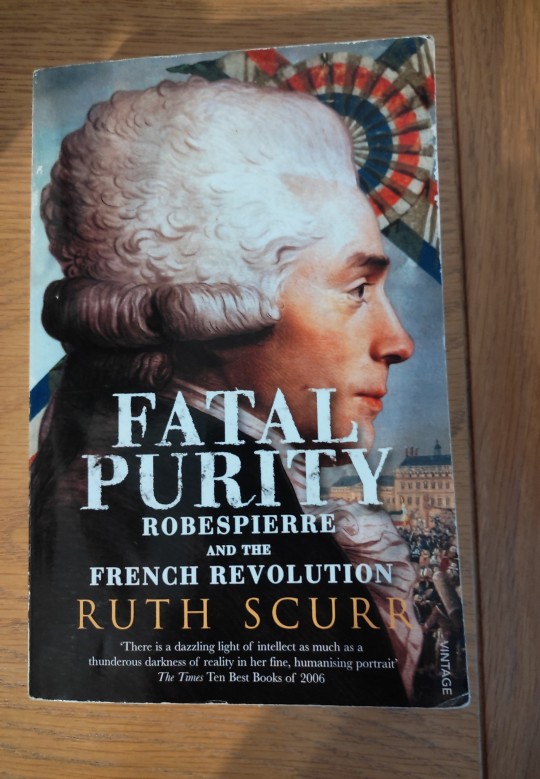
(or alternatively, get yourself a friend who doesn't do it a couple of weeks before your final state exams. Ugh, must... focus... on... studying...)
Still, goals though 💅
#it seems pretty balanced so far? I can definitely see why it says a 'humanising portrait' on the cover#the writing is definitely good#maximilien robespierre#catch me reading this until the small hours and learning precisely nothing about the development of 20th century historiography#french revolution#as Wilde said I can resist everything except temptation#frev#frev community#robespierre#history books#french history#fatal purity#biography
54 notes
·
View notes
Text
"Well! Fouché is arrested. Well done! Well done! Damn it! This is how we teach that scoundrel to live. What an example for the traitors!" " Charles Germain to Gracchus Babeuf on August 9, 1795 by letter
#joseph fouché#babeuf#frev#french revolution#history#france#I don't know if this extract from the letter is true#It wouldn't surprise me#but in this case it shows that the break that Babeuf made with Fouché was earlier than I thought.#Charles Germain#you will still have to wait for the second restoration of Louis XVIII to see your wish fulfilled concerning Fouché#quotes
17 notes
·
View notes